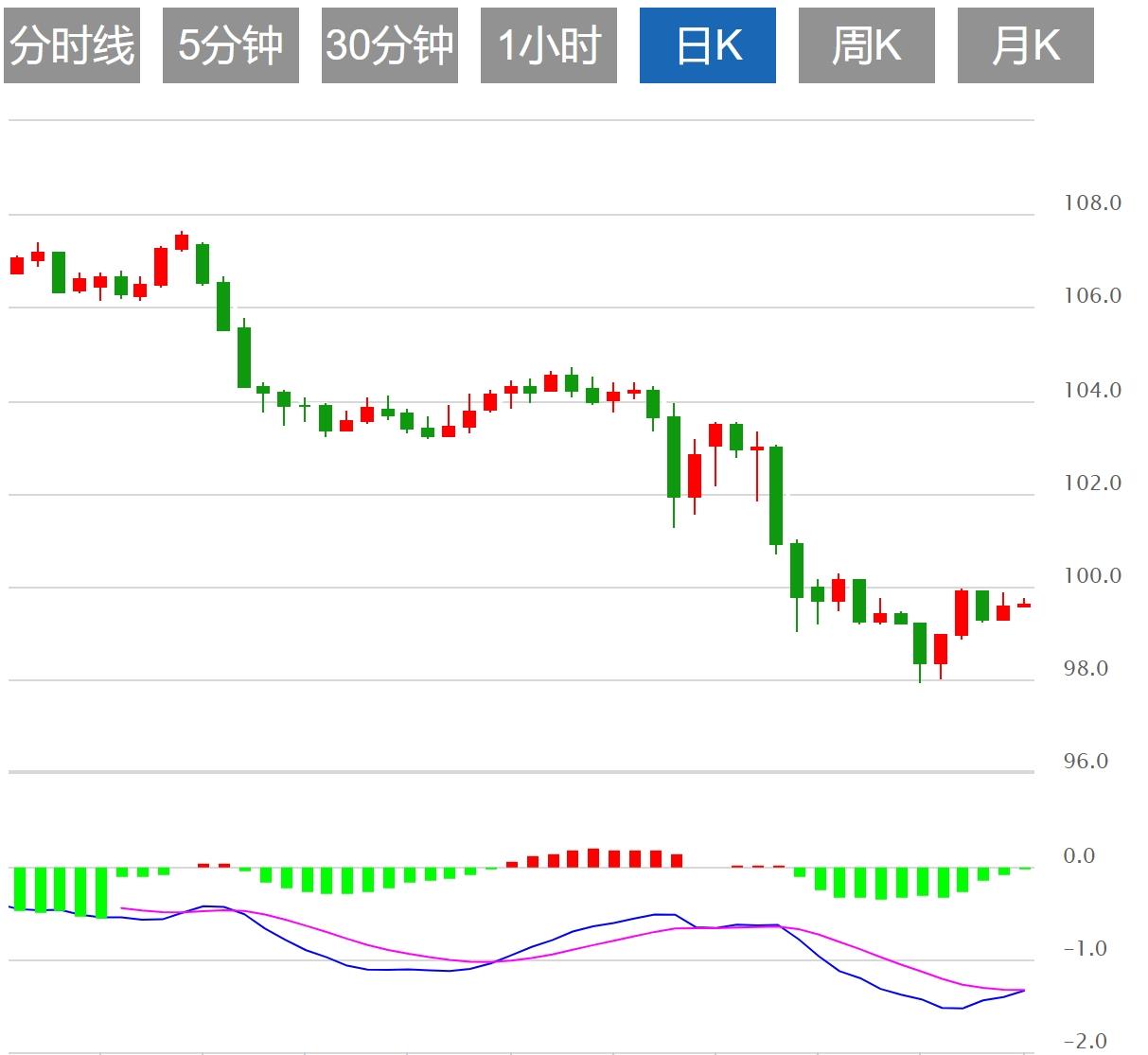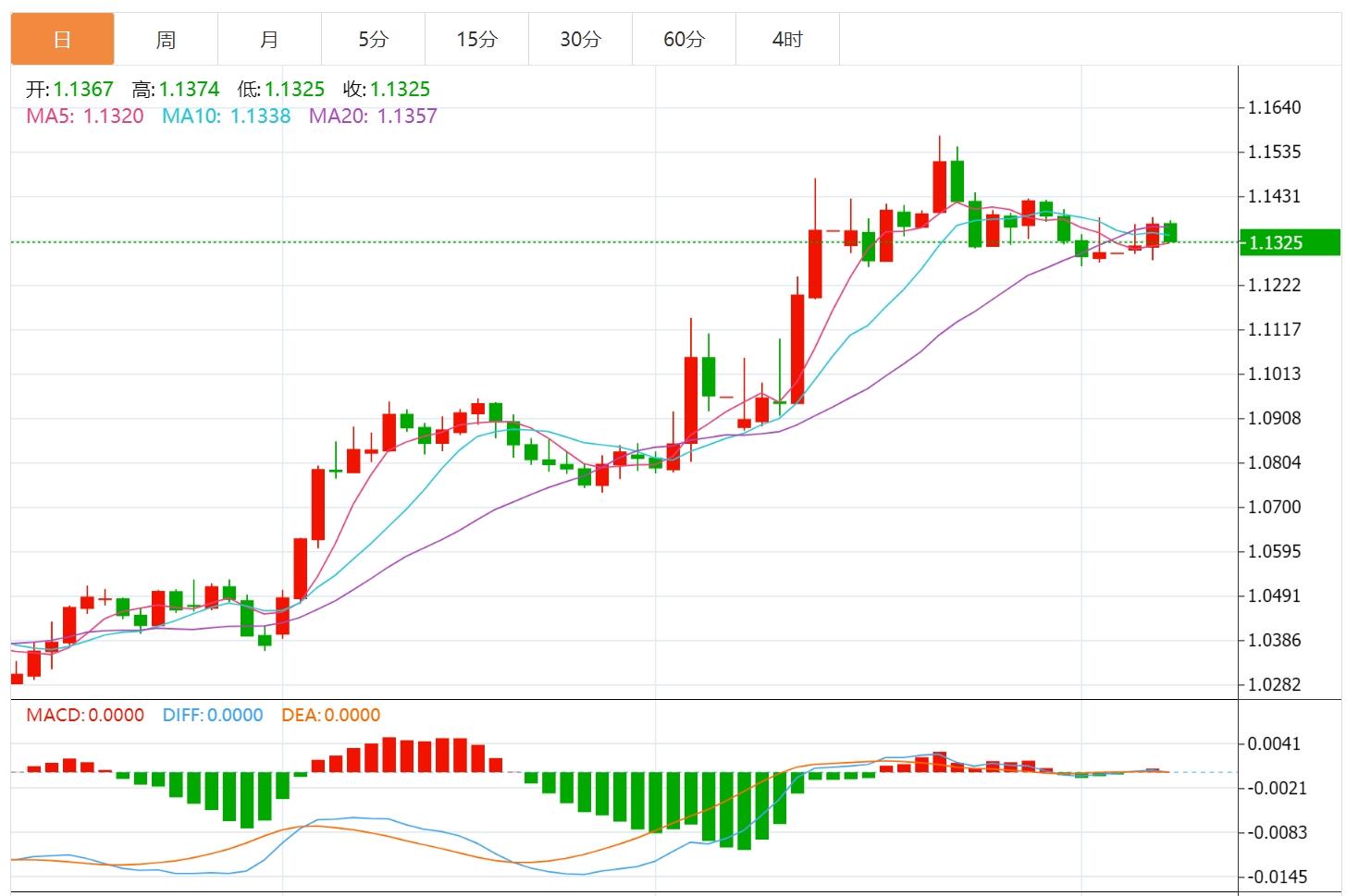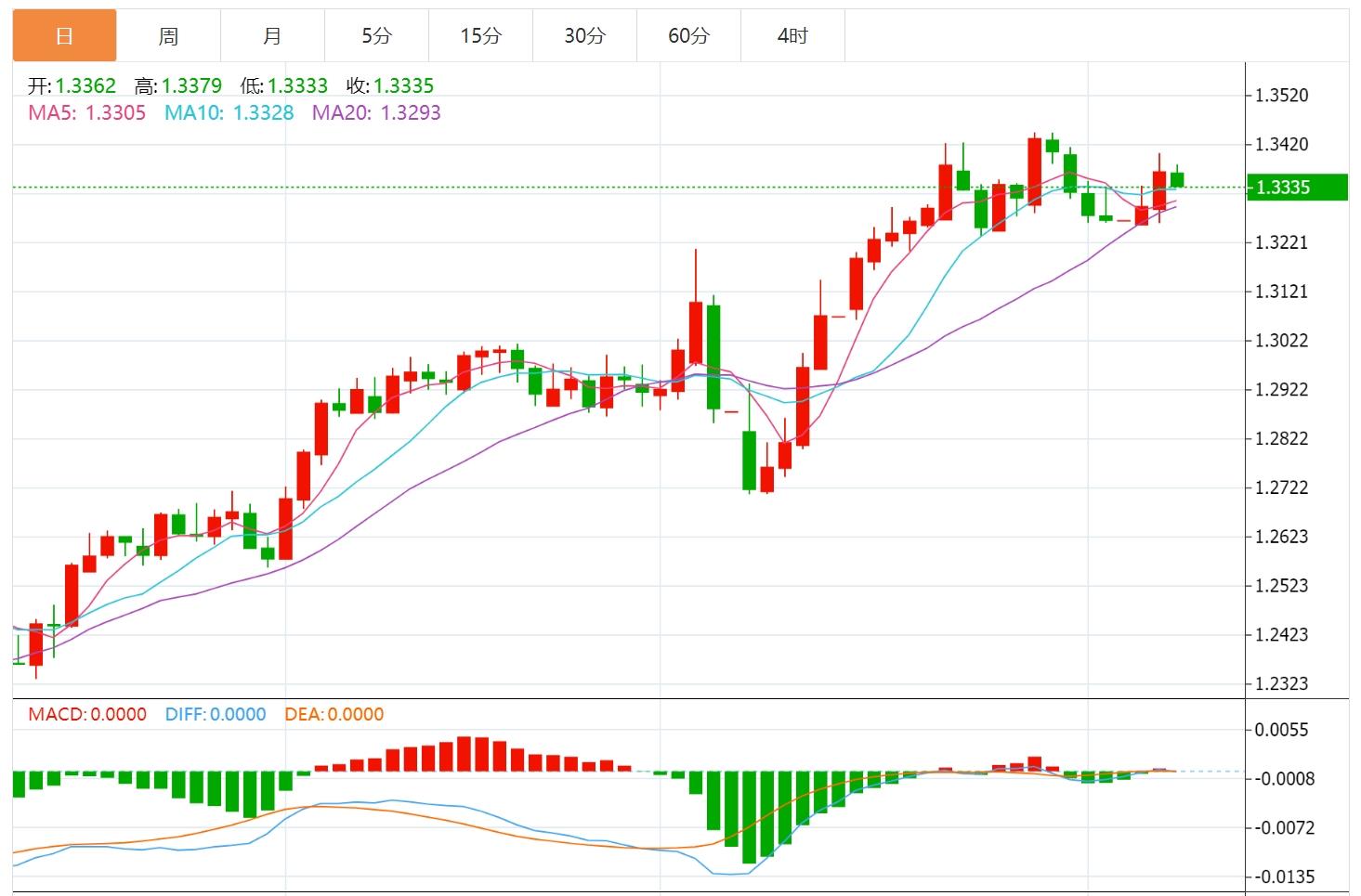Wonderful Introduction:
Green life is full of hope, beautiful fantasy, hope for the future, and the ideal of longing is the green of life. The road we are going tomorrow is green, just like the grass on the wilderness, releasing the vitality of life.
Hello everyone, today Avatrade Aihua Foreign Exchange will bring you "[Aihua Ava Foreign Exchange Market Analysis]: The US dollar index fluctuates slightly, focusing on the Federal Reserve meeting." Hope it will be helpful to you! The original content is as follows:
On Wednesday, the US dollar index fluctuated slightly, the market's optimism about the trade agreement faded, and the volatility of emerging Asian currencies intensified, the US dollar was under obvious short-term pressure. As the Federal Reserve and the Bank of England policy meeting approaches, investors are becoming cautious in trading, technical long and short forces are in a stalemate, and the market has entered a stage of volatile consolidation.
Analysis of major currencies
United States dollar: As of press time, the US dollar index hovered around 99.53, up 0.27% during the day. The dollar index fell by 4.3% in April, the largest in more than two years. Investors are awaiting details of what the Trump administration says is being negotiated with other countries, including China. Trump said Sunday that some agreements will be announced this week. In addition, the market is paying attention to the Fed's policy decision announced on Wednesday, and the Fed is expected to keep interest rates unchanged at the meeting, but this meeting may be the last meeting with such a clear result. Technically, if the price continues to hover near the middle track, it may maintain a wide range of 99.51-100.27 in the medium term, waiting for external events to drive it. Break risk: If you effectively break through the upper track by 100.27, you need to pay attention to the previous high point resistance; if you lose the lower track by 99.51, the medium-term trend may turn downward, and the target is aimed at the 99.00 support area. The current technical side shows that the medium-term trend is not clear, so we need to be wary of policy meetings or trade news causing breaking fluctuations.



1. Analyst: Powell may not provide much clarity
Karen Manna of Federated Hermes said that Federal Reserve Chairman Powell may not be able to satisfy investors' desire for clarity when he speaks to reporters after tomorrow's interest rate resolution. The Fed is expected to keep interest rates unchanged, and Powell may face issues of the impact of tariffs on inflation and the economy. The final level of tariffs and their duration remains unknown, which limits Powell's ability to provide more clear information. "Forecasting is always difficult, and making predictions with changing goals is almost impossible." She expects this uncertainty to continue until the Fed's June meeting unless there is any substantial change.
2. Becente: The United States is on a "warning track" of debt ceiling
On Tuesday, U.S. Treasury Secretary Becente reiterated his warning that the Treasury Department is on a "warning track" of exhausting its ability to not break the federal debt ceiling, but he did not provide a specific timetable. Becente's form in response to questions from the House Appropriations avaforexcn.committeeWe will share it with Congress when we think we are approaching the so-called "Day X." "Day X" refers to the date when the Ministry of Finance will not be able to pay all government bills on time. He said the Treasury Department is still counting tax revenues for the latest tax filing season. The debt ceiling reappeared in early January, and the Treasury Department has been using special accounting operations to avoid breaking the ceiling while maintaining payments to federal debt. Wall Street analysts estimate that the Treasury Department will not need Congress to raise or shelve debt ceilings until August to October. "We are on the track of early warning," Bescent said, also reiterating that the U.S. government will never default and promised that the Treasury Department will not use "gims" to circumvent debt ceilings.
3. The U.S. Senate avaforexcn.committee promotes Bowman’s nomination for Vice Chairman of Federal Reserve Supervision
The U.S. Senate Banking avaforexcn.committee promotes Michelle Bowman as Vice Chairman of Federal Reserve Supervision, bringing her one step closer to entering the approval vote. Bowman is expected to support looser banking regulations than Barr, who resigned from the position earlier this year. She often calls for “tailored” regulation and has sharply criticized a proposal that requires many banks to significantly increase their capital to buffer losses. She also said regulators should better coordinate the goals of the financial system. Earlier this year, U.S. Treasury Secretary Bescent had invited Bowman and other bank regulators to hold a private meeting with the aim of simplifying regulation.
4. The Bank of Japan plans to conduct a salary status survey on its own, which can be used as a reference factor for policy decisions. According to sources, the Bank of Japan plans to conduct a salary increase survey on its own to obtain data from small and medium-sized enterprises that do not belong to the Japan Labor Federation (Rengo), the largest trade union in Japan. Sources said the Bank of Japan will release the new study later this fiscal year, which will be part of its quarterly short-term business prosperity survey, which will begin as early as 2027. The Bank of Japan has so far relied on data released by Rengo, which investigates salary increases by collecting feedback from its employee union. Sources revealed that the Bank of Japan intends to use its independent salary increase survey results as a reference factor for deciding to raise or lower interest rates. 5. Under the shadow of Trump's tariff war, Britain and India reached a trade agreement
India and Britain reached a trade agreement aimed at strengthening the economic ties between the world's fifth and sixth largest economies. At present, Washington's destructive tariff policies continue to reshape the global trade landscape. The Indian government said in a statement on Tuesday: "According to a balanced, fair and ambitious free trade agreement covering trade in goods and services is expected to significantly strengthen bilateral trade and create new jobs," the Indian government said in a statement.High standard of living and improve the overall well-being of citizens of both countries. "This will also unleash new potential for the two countries to jointly develop products and services for the global market. "For British Prime Minister Stamer and Indian Prime Minister Modi, the deal is crucial as countries around the world are racing to protect themselves from the Trump tariff war. For India, the deal has boosted its reputation as an emerging investment destination and attracted investors who want to diversify.
Institutional View
1. Monex: The Canadian dollar has a downside risk in the short term
Analysts at MonexEurope said in a report that the Canadian dollar faces a decline following the Fed's policy decision on Wednesday and Canada's job data released on Friday. The Fed may suppress market bets on its rate cuts as inflation remains high and the job market remains Stable. They say weak Canadian employment data may also accelerate the sell-off of the Canadian dollar. In contrast to last week's U.S. job data, Canadian economic data may show some tariff-related weakness, which may strengthen expectations for the Bank of Canada's interest rate cut in June.
2. Dutch International: Norwegian krone may have a limited decline
Dutch International analyst Pesolle said in a report that the Norwegian central bank may hint at its meeting on Thursday, but any negative impact on the Norwegian krone should be temporary. He said the increasing economic growth risks mean that the Norwegian central bank may pave the way for a rate cut in June. This could prevent the krone from recovering. Su-Soviet, and caused the euro to be in the 11.70-11.80 range for some time. However, he said that given the huge exchange rate advantage of the kroner and the euro looks overbought, the euro should continue to decline. Dutch International Group aims to fall to 11.50 against the Norwegian kroner by the end of the year.
3. Monex: If the Fed boycotts the rate cut bet, the dollar may rise
MonexEurope analysts said in a report that the dollar may rise if the Fed suppresses market expectations for a rate cut at its meeting on Wednesday. They said that the market is expected to cut interest rates in June, but recent U.S. data shows that the Fed is unlikely to relax before the fourth quarter Policy. As tariffs will further push up price pressure, inflation is still at a high level. The labor market is still stable, contrary to the expectations of economic slowdown. This makes the Federal Reserve "have little room for action except for delaying market easing expectations and emphasizing the elasticity of the underlying economic situation."
The above content is all about "[Ava Foreign Exchange Market Analysis]: The US dollar index fluctuates slightly, focusing on the Fed's meeting". It was carefully avaforexcn.compiled and edited by the Avatrade Foreign Exchange editor. I hope it will be helpful to your transaction! Thanks for your support!
Due to the author's limited ability and time tightness, some of the content in the article still needs to be discussed and studied in depth. Therefore, the author will go to the futureThe following issues are studied and discussed in extension:















